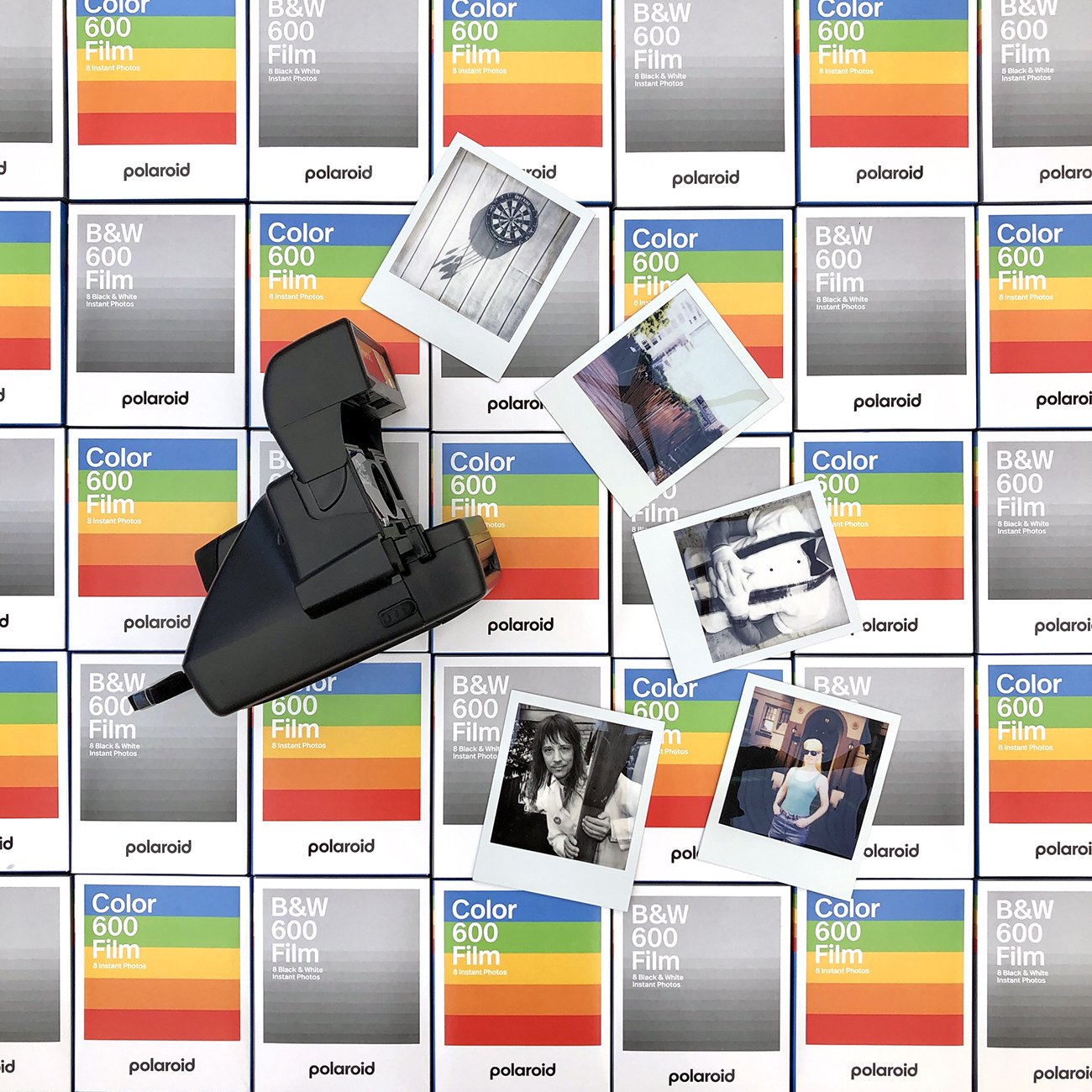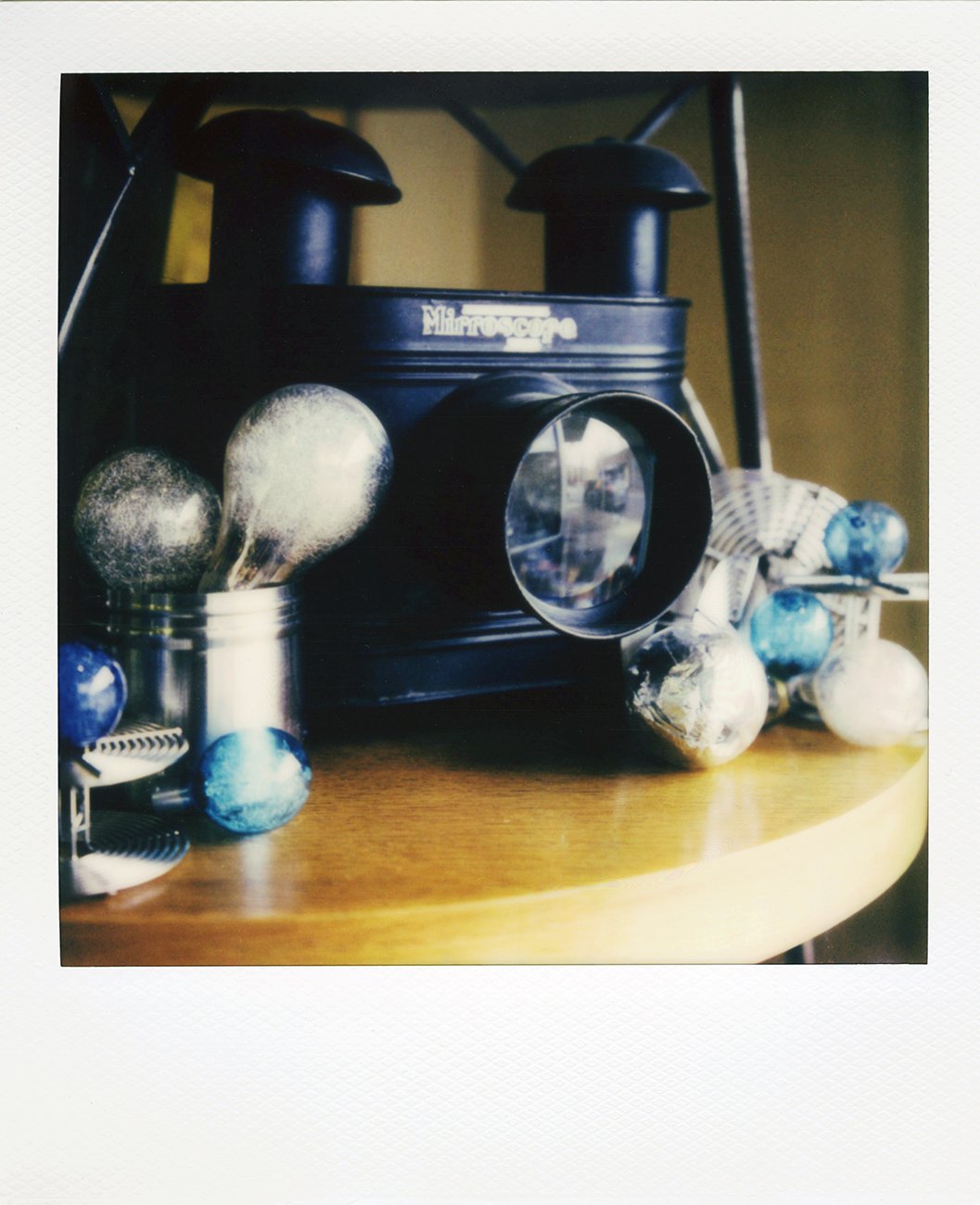Film Friday - May 30th, 2025. Polaroid 600 B&W and Color Film Review
We thought we had seen the last of the Type 600 film back in 2008 when Polaroid announced they were discontinuing the film. But then a new company, formed by folk committed to resurrecting this film format was formed, calling themselves The Impossible Project. Fast forward over a decade to today and all those Polaroid 600 and SX-70 cameras can continue to be supplied with film. It is an amazing thing, and that is why we are giving this film the Film Friday treatment - it is pretty amazing stuff.
Let’s begin by clearing up a bit of confusion. The company now known as Polaroid is not the original Polaroid company. What happened is that The Impossible Project acquired the rights to use the Polaroid name in 2017 and rebranded to become Polaroid Originals. A year or so after that they dropped “Originals” and rebranded back to the original, and recognizable, Polaroid name. The Impossible Project becomes Polaroid Originals which becomes Polaroid.
The story behind The Impossible Project is pretty remarkable. When Polaroid announced they were closing up shop in terms of film production, a trio of individuals, Florian Kaps, Marwan Saba and André Bosman formed The Impossible Project, which leased one of the old Polaroid plant buildings in The Netherlands and bought a bunch of the old equipment. They then hired ex-Polaroid engineers to help them build a replacement film for the discontinued Polaroid films. They focused on the integral films such as 600, SX-70 and Spectra. Sadly they were not able to bring back any of the pack films that Polaroid had made.
That early film was pretty awful stuff, but they were attempting to recreate a complex chemical process that Polaroid themselves had spent decades perfecting. Nonetheless, when those first Impossible films hit the market they quickly proved to be very ephemeral (fading out quickly), extremely finicky (you had to shield the film when it ejected or it would wash out) and highly inconsistent. But it was a start, and to Impossible’s credit they continuously revamped the film technology rolling out multiple successive generations of film. More than a bit unfairly though, those early generations of the film earned Impossible a negative reputation with many that took years to shake and still persists today. Photographers often talk about issues that Impossible films generated in past iterations but have since been fixed as if they are still happening. A good example of this is the shading of the ejected shots. This used to be all but mandatory or you’d lose the image. This hasn’t been an issue for some time now, yet many photographers still think it is necessary. What we are getting at, and one of the first things worth discussing with this film, is that the current product far exceeds the often low expectations placed upon it.
A “mid generation” Polaroid 600 B&W image circa 2018/19. By the late 2010s the film had improved dramatic but was still quite quirky and finicky.
Here’s how we describe the current Polaroid film in general. It is not the original Polaroid film, nor is it a resurrected version of it. It is best thought of as its own thing. It definitely has a vintage analog look to it. Whereas Fuji Instax is known for crisp, bright, sharp colors, Polaroid film is a fair bit different.
Let’s start with the Polaroid 600 B&W film. The current generation of this film has a nice amount of contrast to it as well. Shadows can be very crisp and deep, but the highlights are not as clean as those found on Instax. Polaroid 600 B&W has become fairly neutral in its monochrome rendition but still has a touch of an ivory warmth to it. Naturally as an ISO 640 film, there is a decent amount of visible grain to these images. We feel like the grain of the B&W emulsion is more noticeable than that of the Color emulsion, but having said that it is a nice-looking film grain. The developing time for the 600 B&W is stated as 5-10 minutes, with ambient air temperature being one of the biggest factors in an increase or decrease over this time.
The modern Polaroid 600 B&W film looks remarkably good compared to earlier generations. It is pretty neutral in its tones and has great contrast.
The Polaroid 600 Color film meanwhile has pretty rich colors but can unpredictably throw in some color casts here and there. The contrast of the Color 600 feels higher than that of the B&W 600. The shadows in Color 600 are deeper and more blocked up. Highlights tend to have a warmer, creamy cast to them as opposed to being a stark white. There is an element of serendipity to the film as well. It is nowhere near as inconsistent as it used to be, but your results will vary from shot to shot. This is part of its charm, in our opinion. Even if the film were perfect, you’d still be running it through old Polaroid cameras that were scavenged at Goodwill or the thrift store. Embrace the element of chance that often arises when using such analog technology. The Color 600 emulsion has a longer developing time than that of the B&W with a stated range of 10-15 minutes (influenced by ambient temperatures).
Meanwhile the 600 Color film also performs great. This image has a lot of contrast despite being made in the open shade of late afternoon, most likely attributable to the always-on flash of the camera providing foreground exposure.
Of course, the film’s biggest selling point is its instant nature. There are not many places you can go in the analog world of photography and enjoy seeing your images instantly. For decades the ability to snap a photo and watch it develop in front of your eyes has charmed people worldwide. It allows you to make a portrait of that interesting passerby and let them walk off with a developed result. Or to get a shot of that special someone and memorialize it in the iconic Polaroid frame. And don’t overlook the fact that each shot is a one-of-a-kind creation. There is no reprinting of the negative, you’ve made a limited edition series of one.
A Polaroid 600 B&W image circa 2019 made with a tri-prism filter.
Before closing, we do have some general tips when shooting with Polaroid 600. The first is to remember that it is an ISO 640 film (as opposed to SX-70 which is ISO 160). This makes Polaroid 600 the better choice for instant photography in slightly dimmer conditions. Most Polaroid 600 cameras have built-in flashes, but not all of them do, so the extra film speed may help. Also since it is a faster ISO, be more careful when flying with it. Polaroid recommends avoiding airport X-rays at all costs. If you are traveling with Polaroid 600 it is best to avoid packing it in your checked luggage (which goes through more powerful X-rays) and to request a hand check at security.
There is also the matter of shielding the film right after it has ejected from the camera. Polaroid film maintains some sensitivity to exposure after it has ejected. The best practice is to immediately tuck it away out of light for the required developing time. It is fine to peek at it now and again, but leaving a developing Polaroid exposed to bright light will result in a very faded, washed out result.
Two frames of Color 600 shot at the same time. The image on the left was not shielded at all and left face up in the sun as it developed. The image on the right was tucked away as soon as it ejected from the camera and left face down for its developing.
The final point to make in regard to Polaroid film is that it uses the array of cameras made by Polaroid over the several decades that the company was fully invested in the development of this film. There are dozens of different cameras, oodles of accessories and all sorts of other fun paraphernalia from the 1970s, 80s, 90s and 00s to dig up and pair with a box of the modern Polaroid films. The above image is a good example of this. One of our staff has a tri-image filter for his Polaroid 600. It’s goofy and definitely very 80s, but he has a ton of fun with it. So if you are going to shoot Polaroid, make sure to do some research into the history of the cameras and products made for this film and see what toys you can find to experiment and have fun with! There have also been various creative borders issues for Polaroid 600 such as the Round Frame. This fun edition operates like normal but the resulting image is encapsulated in a circular frame instead of a rectangular one. Over the years Polaroid has produced the 600 film with various colored borders too.
We have almost every film stock available on the market. Check it out!
If you need an excellent lab for meticulous film developing, topnotch optical prints, traditional darkroom printing and superb film scanning, we’re your lab!
Also, sign up for our weekly newsletter The Loupe and keep your eyes peeled on our social media feeds every Friday when we feature a different film and also offer it at a one day discount of 15% off!



















